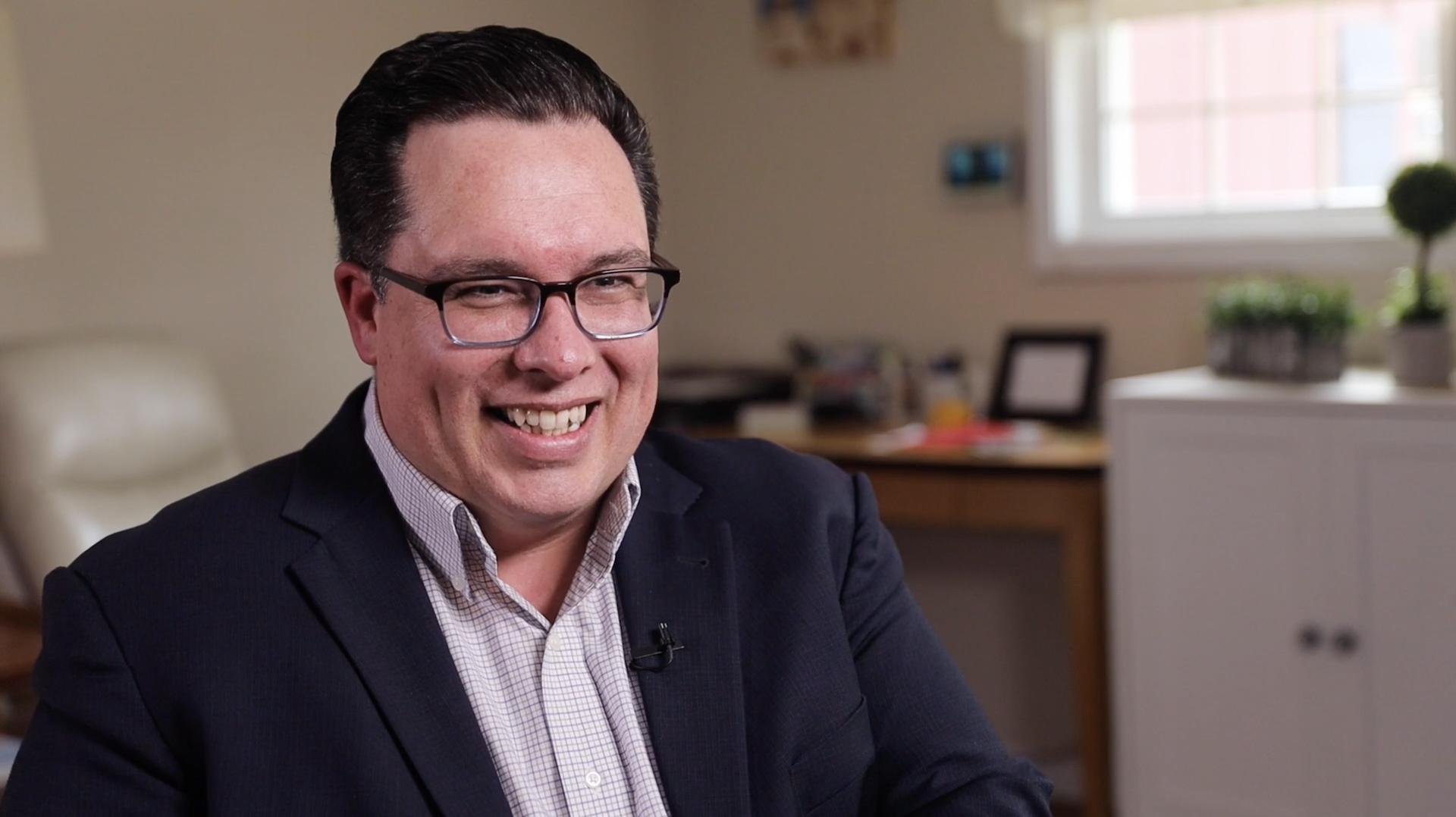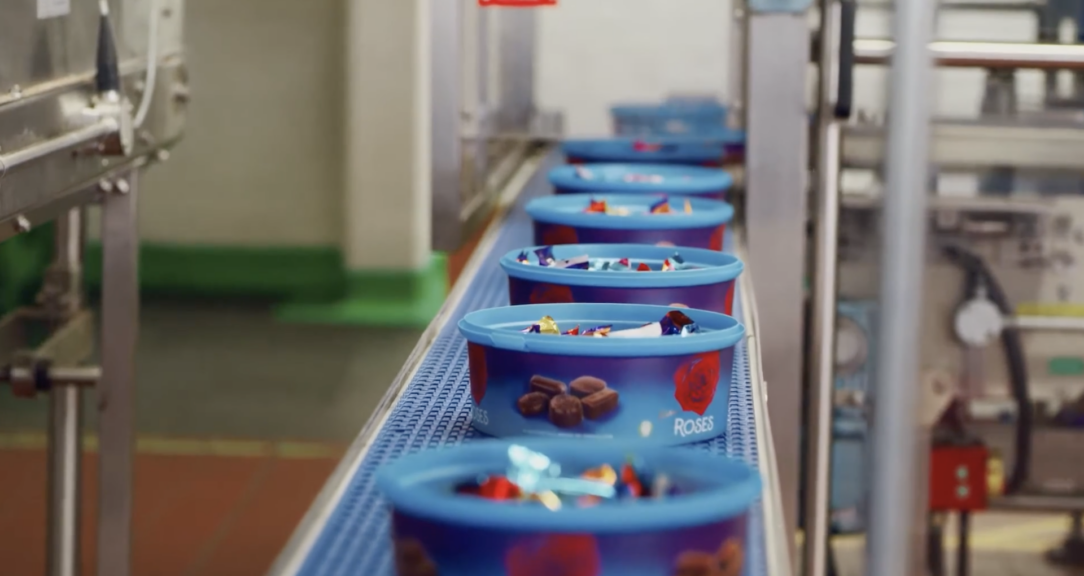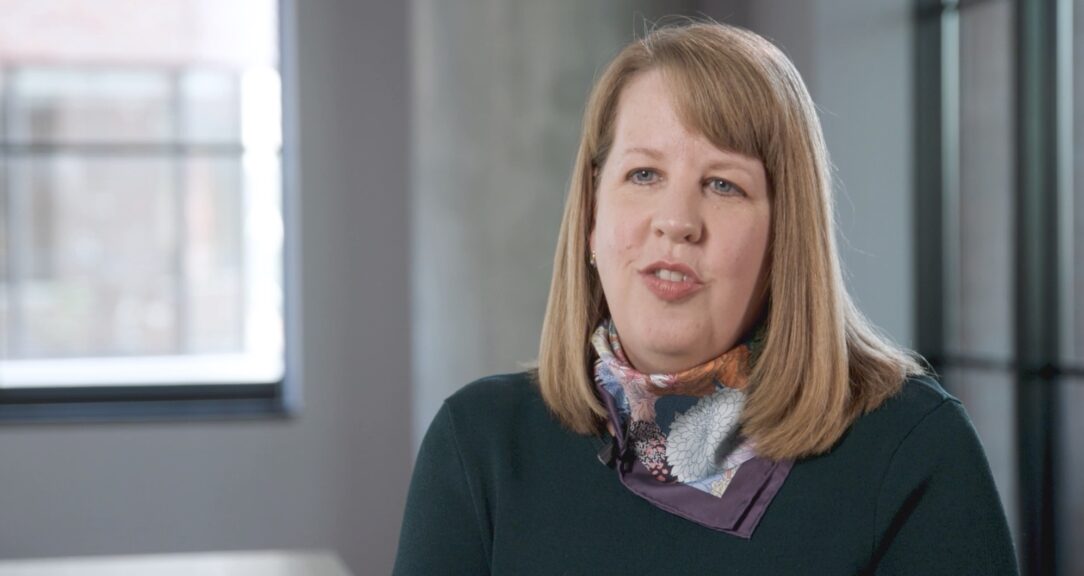As a boy, Marc Fafard watched his grandfather patent engine improvements for an aerospace company and dreamed of someday having an equally profound professional impact. Today, he too can boast a patent — in the field of payroll — thanks to a unique collaboration between ADP and Raytheon Technologies.
ADP ReThink Quarterly: Tell us a bit about how you ended up at Raytheon Technologies.
Marc Fafard: I started my career with Deloitte splitting my time between corporate income tax and a global compensation and benefits practice. At Deloitte, I had the opportunity to prepare the Raytheon corporate income tax returns.
But my first exposure to Raytheon was when I was about six years old. My grandfather was an engineer and an inventor for Pratt & Whitney, one of our business units. He took me with him when he used to take groups of Boy Scouts on tours of the shop floor. And I remember looking up and seeing these engines that were just larger than life. My grandfather started as an engineer after he came out of the Navy, and he ended up working his way up to foreman. He had several inventions that were patented related to engine improvements at Pratt & Whitney. That was something that I always wanted to emulate personally — to have that type of an impact.
In early 2007, Raytheon opened a payroll tax planning position, and after having them as a client, I jumped at the chance to formally join the family. So I’ve been with Raytheon for 15 years.
ADPRQ: Can you tell us a little bit about the company?
Fafard: Raytheon has about 180,000 employees all around the world. We provide services in about 50 countries. Raytheon’s comprised of four different business units. We have Pratt & Whitney, which makes jet engines. We have Collins, which makes pretty much everything else in a plane. We have Raytheon Missiles & Defense, and then we have Raytheon Intelligence & Space.
We’ve also gone through a commercial spin-off where we separated out Otis Elevators and Carrier air conditioners to be their own publicly traded companies. And in 2020 we merged the aerospace part of our business that was heritage UTC — United Technologies Corporation — with Raytheon and formed this awesome aerospace and defense company. And all of that is who we are today.

ADPRQ: What was the payroll situation when you first came in-house in 2007?
Fafard: I came into a tax planning position and was initially tasked with getting a state of things on our overall payroll tax, planning and audit activities. And our model at that point in time was highly leveraged and overly outsourced. We didn’t have the right balance in internal structure really governing that activity.
I remember the first time I went into our payroll operation shop to put eyes on the payroll cycle and the payroll process. And I remember seeing stacks of payroll registers that were higher than my head. I realized we had about 100 different payrolls in the U.S. that we were running. And we had all of these payroll registers that were printed out and that were manually reconciled with pencils. That started our formal journey to look for a better way to find enabling technologies.
ADPRQ: How did you determine that ADP was the right partner for the task?
Fafard: The only provider that we found that was effectively leveraging technology in this space was ADP’s full-service payroll outsourcing arm. They were using business process management technology to encapsulate that whole end-to-end process and automate those activities and controls. And so that started us on that journey of rethinking the end-to-end payroll process and leveraging a combination of technology with robotics to automate that entire set of controls. That enables us to refocus our talent on the high value-add tasks.
Around 2012, we formally launched the global expansion of our relationship with ADP. We started down the path of going from what was at the time over 99 different payroll solutions in our top 20 countries to implementing one consistent global solution and set of processes for the company.
ADPRQ: What were some of the benefits of that decision?
Fafard: In 2017, we started moving towards acquiring a company called Rockwell Collins that had about 25,000 employees that were on two completely different HR and payroll solutions. We had to take that organization and bring them into the fold, integrate them from a people technology and from a process standpoint. Normally, I would say an acquisition of that size and complexity would have taken at least 12 months. But we were able to do that integration in just four months from closing the deal.
ADPRQ: That’s a huge time saving. Were there any other achievements that stand out to you?
Fafard: Another interesting challenge happened not long after I joined Raytheon Technologies. We had gone through an assessment of all the different opportunities that we had and prioritized where we needed to focus. One of those areas that rose to the top was the IRS requirement to remit taxes that are withheld from equity compensation within 24 hours of that exercise or vesting activity. But our payroll cycle from start to finish was about two to three days, so we really didn’t have the ability to run our payroll on a daily basis and meet that requirement.
“Our first major collaboration between ADP and Raytheon ultimately achieved $20 million in tax risk mitigation.”
Marc Fafard, Raytheon Technologies
I remember I was sitting by the pool while my son was swimming, and I was fooling around on the ADP website. And I saw there was a particular page for ADP stand-alone tax services. And I said, “That’s interesting.” I clicked on it, and I saw there was what looked like a portal, with the ability to enter activity at the company level.
At that point the light bulb turned on, and I thought: What if we could partner with ADP on this? They already have the tools to connect a company-level input without running a payroll with the activity that’s normally coming through. And we could have a way to remit these taxes on a daily basis without needing to run through that daily production process. So that turned into our first major collaboration between ADP and Raytheon, which ultimately achieved $20 million in tax risk mitigation. My colleague Denise Ralls-Gaines and I partnered with our Raytheon Technologies Innovation Group to file a patent for that idea, the first to be filed for an innovation within the payroll and tax organization.
ADPRQ: That must have been incredibly rewarding given your family history.
Fafard: That was a reflection point for me. It was also a personal achievement in that it enabled me to check that box on my list of personal career goals and objectives. Looking back at my grandfather and the inventions that he had for Pratt & Whitney. And now with the ability to say, “Hey, here’s where I added value as well.” That was a proud moment leading one of the more recent innovations, and it’s a great area where we’ve partnered with ADP.
Overall, when we look at automating activities with robotics, we’ve effectively reduced our payroll footprint in those payrolls by over 30%, and we’ve significantly compressed that cycle time. Beyond that, the way we typically measure success is if I see smiles on faces: when people are coming off the elevator in the morning, if people are excited to come into the office and they’re looking forward to pushing the boundaries and taking risks and rethinking how we do what we do. That is how I would define success, together with the execution.
ADPRQ: What does Raytheon Technologies hope to accomplish next with ADP?
Fafard: We’re now starting to refocus on what to do with the capacity that we have. How do we focus that on those higher value-add functions? And how do we start to help that data tell the story? Now we’re also looking to partner with ADP and our global payroll operating models around the world and take that same approach as we look at the different solutions that we leverage. Again, it’s about looking at what is the end-to-end process, and what is possible in that space.
Contact ADP to discover how your organization can innovate and streamline your global payroll processes.
Read more
Sign up to keep up to date with ReThink Q.






